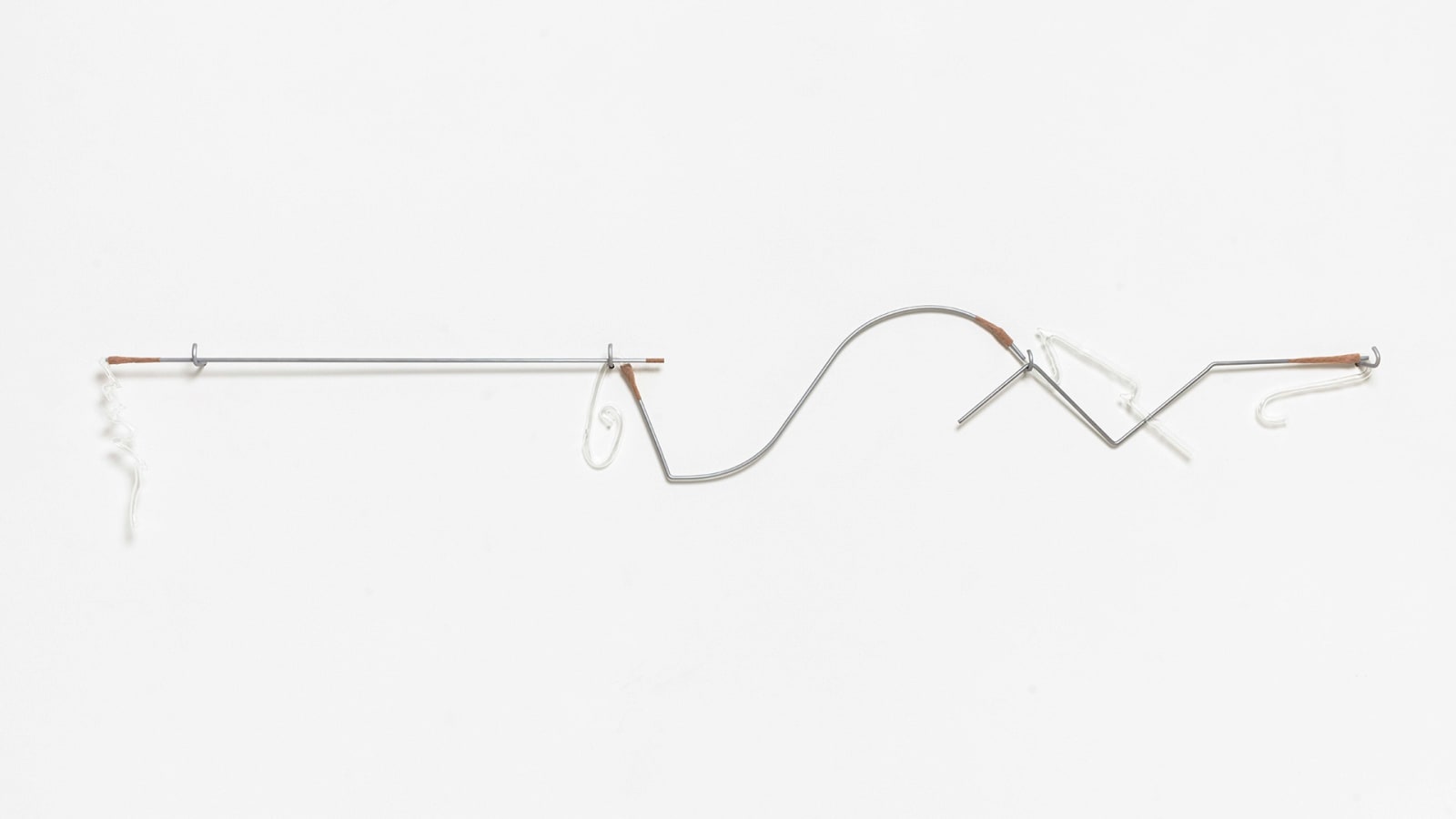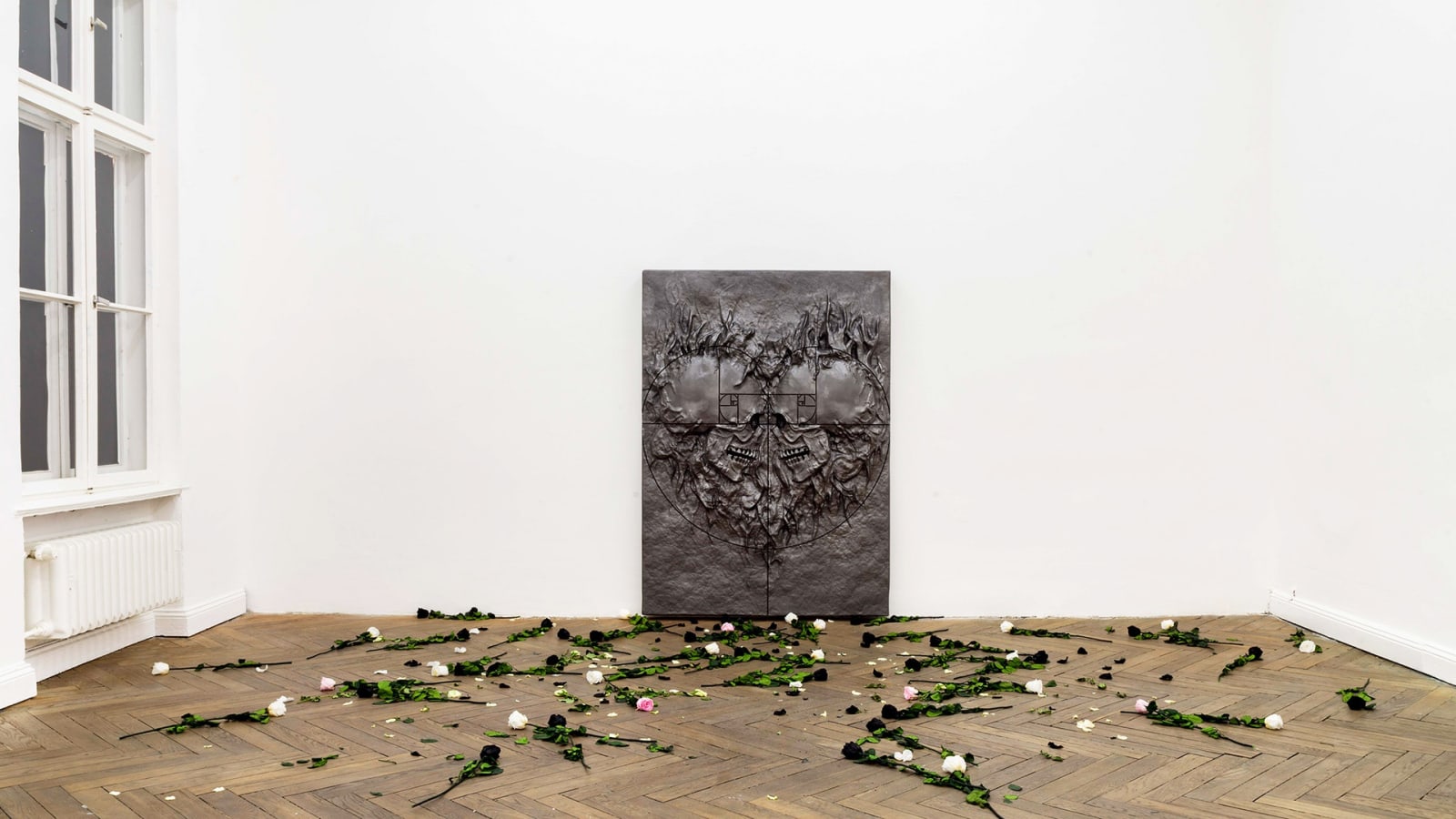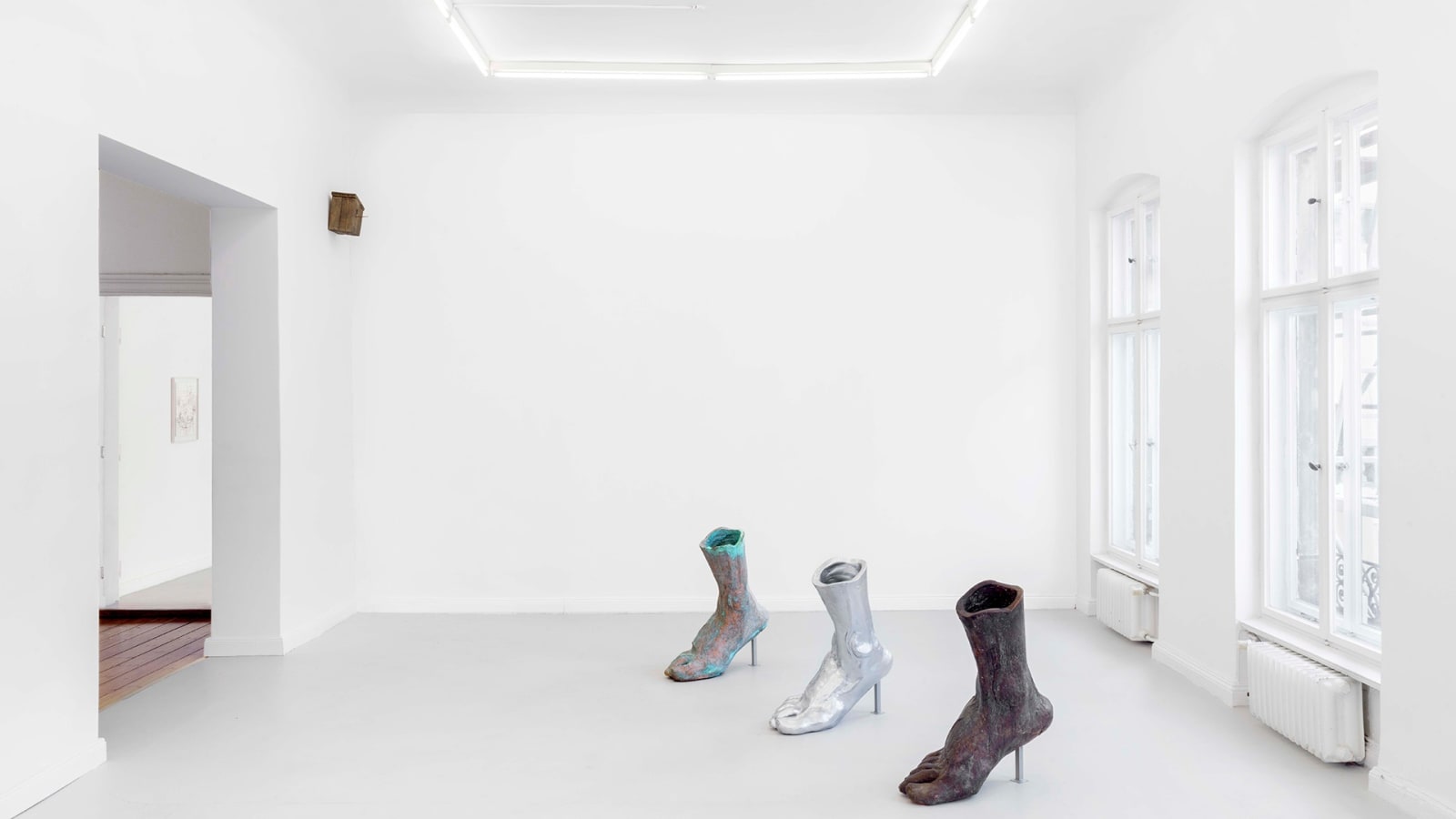With works by Leda Bourgogne, Zuzanna Czebatul, Fanny Gicquel, Nona Inescu, Julian-Jakob Kneer, Ariane Müller & Martin Ebner, Alvaro Urbano, and Tobias Spichtig.
XC.HuA is pleased to announce the group exhibition Walking in Ice, opening Friday, 24 July between 1-6 pm. A performance by Fanny Gicquel featuring Mickey Mahar, Maria Ladopoulos, and Omagbitse Omagbemi will take place at 7pm following the public reception.
Walking in Ice explores delicate and dynamic entanglements between the self and the other. The exhibition’s title is inspired by a memoir written by Werner Herzog, chronicling a journey from Munich to Paris that the German filmmaker undertook by foot in 1974 to be at the side of his gravely ill friend and mentor Lotte H. Eisner. Walking for three weeks in the deep chill of winter, Herzog was convinced that this act of physical devotion might save the life of his dying friend. Working in a range of media, the artists in the exhibition all deal in different ways with questions of vanity, loneliness, and mortality; a desire for connection; empathy and attraction; a compulsion to memorialize lovers, friends, or family members; the boundaries between the self and the other; and notions of injury, disturbance, and care.
Fanny Gicquel’s sculptures and performances address ephemerality, fragility, and the inherent plurality of the self. Through slowness and immobility, her performances create images close to a living picture, producing a particular poetic, tense, sometimes abstract, and uncertain atmosphere. When in performance, Gicquel’s sculptures act as measuring instruments, taking on the double function of marking the border between bodies while functioning as an extension of the body, allowing one to touch another. Leda Bourgogne’s work draws upon feminist theory, psychoanalysis, and literature to grapple with questions related to language, the body, and the psyche. In Prize Fighter, a pair of slender spray-painted mannequin arms wrapped in nylon leggings and festooned with small shells dangle from the ceiling. In lieu of hands, a pair of boxing gloves cup each other tenderly—an open gesture of benevolence, defeat, care, and pain. For Siegfried’s Departure Zuzanna Czebatul made three plaster casts of the mythical Germanic hero’s foot, who is depicted re-forging the sword of the empire in the Bismarck Memorial in Tiergarten, each with a different metal and patina.
Since its creation, the memorial itself has traveled through the city, pushed around by the political circumstances of each period. Today, as monuments and memorials are dismantled around the globe, the disembodied foot raises myriad questions about where we are going and the work that lies ahead. A kind of porosity between the self and the other, interior and exterior, human and non-human has come to define Nona Inescu’s practice. She creates subtle, delicate encounters between human, animal, vegetal, mineral, and synthetic bodies that imagine the world less as a space of discrete, partitioned entities than a dynamic constellation of interminglings, crossovers, and interferences. In Ariane Müller’s video-installation It a potted-plant rests upon a video monitor playing a loop of three black-stockinged legs walking in tandem. This juxtaposition creates a hybrid vegetal-animal creature, a self becoming other. Alvaro Urbano’s immersive environments unlock the emotional resonance of commonplace objects and spaces. For Petrit at Night (08.07.2019), Urbano built a birdhouse in which he playfully placed a recording of an intimate moment: the snoring and ambient noises made by his sleeping husband. An ethereal, wistful quality haunts Tobias Spichtig’s painting Theresa. Combining the hazy quality of a photographic print with painted intervention, a spark of intimacy bristles beneath the distance inherent in Spichtig’s approach to the medium. Julian-Jakob Kneer’s MARTYR (feast upon me/Alle Uhren bleiben stehen) adopts a darker, more psychologically charged approach in his examination of the intersection of love and death: two skulls face each other in a heart-shaped relief executed in polyurethane foam above a floor strewn with crumpled roses.







